The Mesozoic Era, spanning from 252 to 66 million years ago, witnessed the reign of dinosaurs across landscapes dramatically different from those we know today. Among the most biologically productive and ecologically significant environments of this period were the massive river systems and sprawling deltas that crisscrossed prehistoric continents. These dynamic waterways not only shaped the land but also influenced the evolution, behavior, and distribution of dinosaur species. From the towering sauropods that browsed riverside vegetation to specialized fish-hunters that stalked the shallows, these aquatic environments supported incredibly diverse dinosaur communities. This article explores the fascinating relationship between dinosaurs and the ancient river systems they depended upon, revealing how these waterways served as the lifeblood of some of Earth’s most extraordinary ecosystems.
The Mesozoic Hydrological Landscape

During the Mesozoic Era, Earth’s continents were arranged differently than today, with the supercontinent Pangaea gradually breaking apart. This tectonic activity created vast river systems that dwarfed many modern equivalents in scale and flow. Evidence from sedimentary deposits indicates that some Mesozoic rivers were truly colossal, with channel widths spanning several kilometers and floodplains extending for hundreds of kilometers. Climate patterns during this time also contributed to seasonal monsoons in many regions, causing dramatic flooding cycles that deposited nutrient-rich sediments across expansive floodplains. These ancient waterways weren’t just passive features of the landscape—they actively sculpted the terrain where dinosaurs lived, creating a mosaic of habitats ranging from fast-flowing channels to quiet oxbow lakes and sprawling wetlands.
Famous Dinosaur-Bearing River Systems
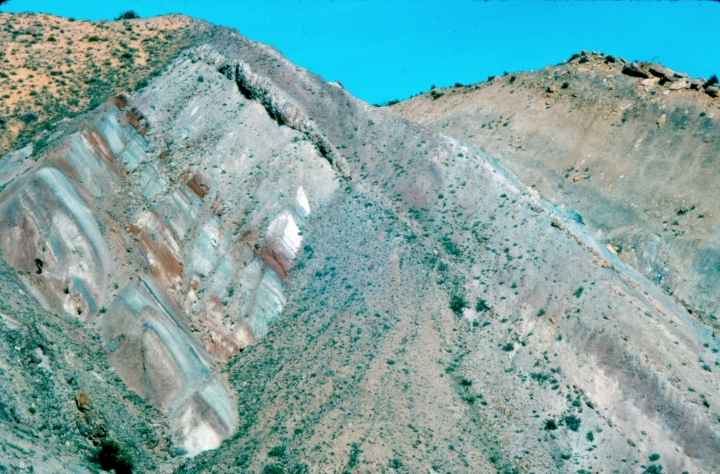
Several ancient river systems have become renowned for their exceptional dinosaur fossils, offering windows into these vanished ecosystems. The Morrison Formation of western North America preserves a Late Jurassic river system that supported iconic dinosaurs like Apatosaurus, Stegosaurus, and Allosaurus in a seasonally dry environment with meandering rivers and floodplains. In the Cretaceous period, the Judith River and Hell Creek formations captured the final chapter of dinosaur evolution along river systems in what is now Montana and the Dakotas. Perhaps most spectacular is the Kem Kem region of Morocco, which preserves an enormous delta system where giant predators like Spinosaurus and Carcharodontosaurus hunted alongside massive rivers that drained the northern portion of Africa during the mid-Cretaceous. Each of these formations tells a story of dinosaurs intimately connected to the water sources that sustained them.
River Environments as Biodiversity Hotspots
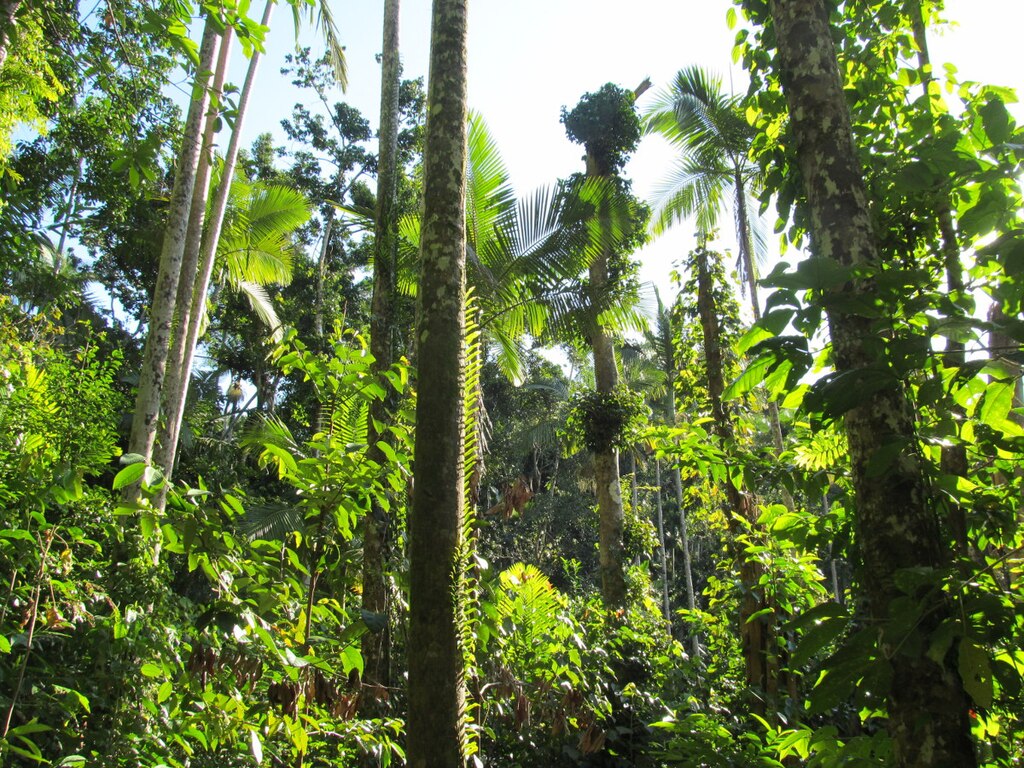
Ancient river systems functioned much like modern ones as centers of biodiversity and ecological productivity. The combination of reliable water, nutrient-rich soils, and diverse habitats allowed these corridors to support far higher densities of plant and animal life than surrounding environments. Riverside forests provided food and shelter for herbivorous dinosaurs, which in turn attracted predators, creating complex food webs. Fossil evidence shows that dinosaur diversity was typically highest in riverine environments compared to inland areas distant from water sources. The continual deposition of sediments in these environments also created ideal conditions for fossilization, which partly explains why river deposits have yielded so many dinosaur remains. Paleontologists have found that different microhabitats within river systems—from sandbars to levees to backswamps—often supported distinct dinosaur communities specialized for various ecological niches.
Adaptations of River-Dwelling Dinosaurs
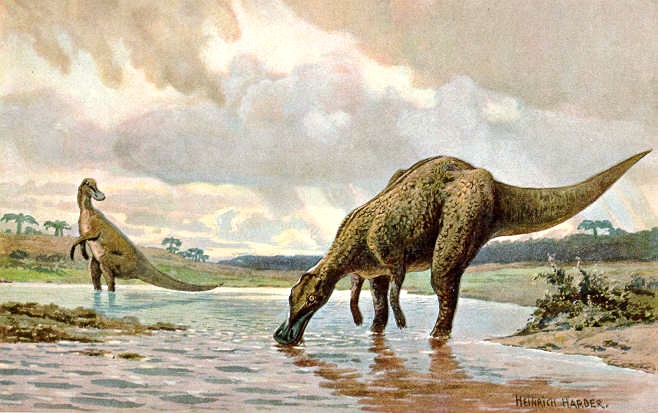
Dinosaurs that lived alongside rivers frequently evolved specialized adaptations to exploit these environments effectively. Some hadrosaurs (duck-billed dinosaurs) developed complex dental batteries that could process tough riverside vegetation, while their broad, flattened feet helped navigate soft sediments without sinking. Certain theropods evolved towards piscivory (fish-eating), developing conical teeth and elongated snouts ideal for catching slippery prey in shallow waters. The most extreme adaptation appeared in Spinosaurus, with its crocodile-like snout, pressure-sensitive receptors, and dense limb bones that likely helped it hunt while semi-submerged. Even dinosaurs not directly dependent on aquatic resources often showed adaptations to riverine habitats, such as the long necks of sauropods that could reach high into riverside gallery forests where seasonal flooding produced lush vegetation. These evolutionary specializations highlight the powerful influence that river systems exerted on dinosaur biology.
The Spectacular Spinosaurus: River King
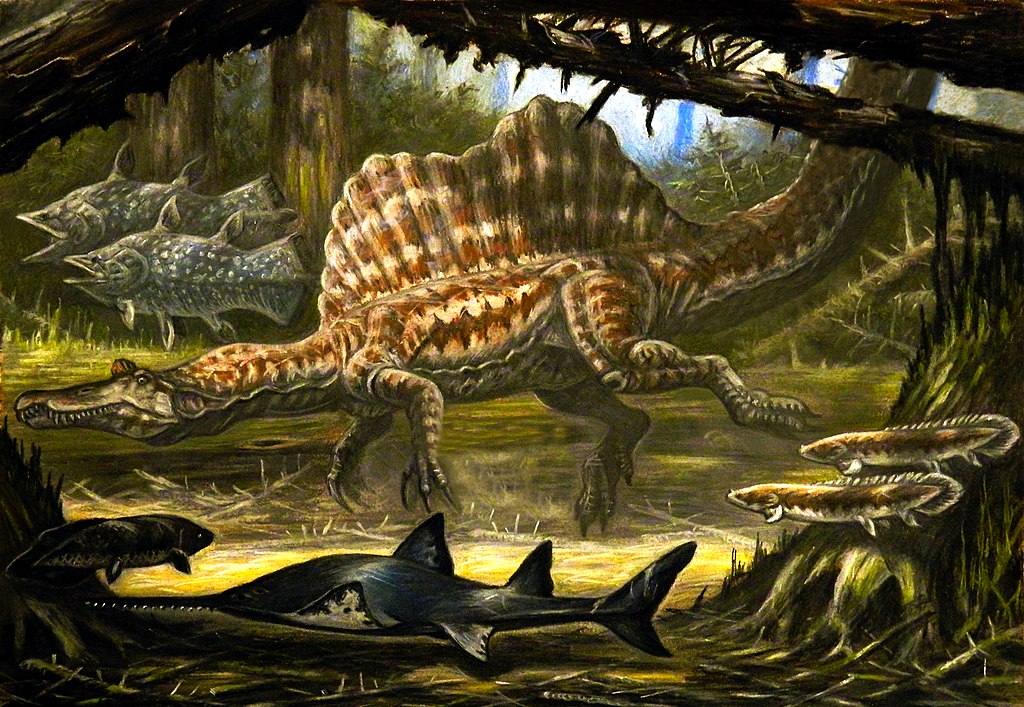
Spinosaurus aegyptiacus represents perhaps the most dramatic example of a river-adapted dinosaur, with recent discoveries revolutionizing our understanding of this remarkable predator. Growing to over 50 feet long, this theropod possessed a suite of adaptations specifically for an aquatic lifestyle along North African river systems of the mid-Cretaceous. Its unusually dense limb bones reduced buoyancy, while its paddle-like tail provided propulsion through water—unique features among known theropods. Sensory pits along its elongated snout likely detected movement of prey underwater, similar to modern crocodilians. Isotopic analysis of Spinosaurus teeth shows chemical signatures consistent with extended time spent in water, further supporting its semi-aquatic habits. The evolution of such a specialized river predator speaks to the ecological richness of ancient waterways, which could support massive carnivores occupying niches that simply didn’t exist in drier environments.
Delta Ecosystems: Where Rivers Meet the Sea
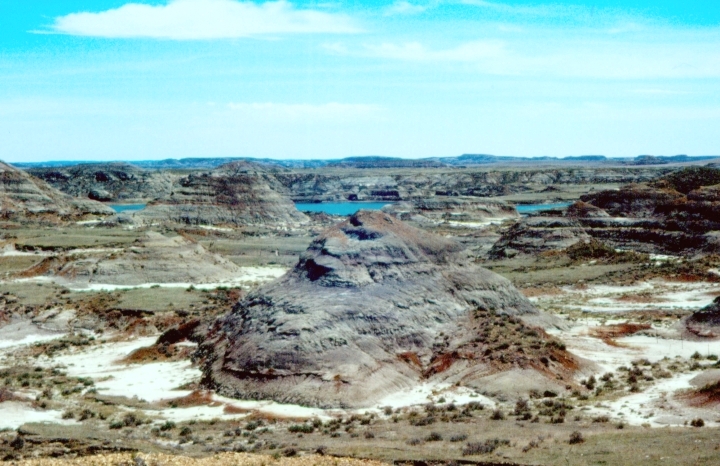
River deltas represented some of the most biologically productive environments of the Mesozoic, creating complex transitional zones between freshwater and marine ecosystems. These extensive wetlands were characterized by multiple distributary channels, brackish lagoons, and frequently shifting landforms that created a patchwork of habitats. The Hell Creek Formation of Montana preserves portions of a delta where Tyrannosaurus rex and Triceratops lived during the latest Cretaceous, while the Nemegt Formation of Mongolia captures a similar environment in central Asia. These deltas supported tremendous plant diversity due to their nutrient-rich soils, attracting herbivorous dinosaurs in great numbers. The complexity of delta environments also created numerous ecological niches, allowing many different dinosaur species to coexist within relatively small geographic areas by partitioning resources. The preservation of footprints in delta deposits has provided valuable information about dinosaur movement patterns and social behavior in these productive habitats.
The Role of Seasonal Flooding in Dinosaur Life Cycles

Many Mesozoic river systems experienced pronounced seasonal flooding, creating boom-and-bust cycles that influenced dinosaur behavior and life history. Fossil evidence suggests some dinosaur species synchronized breeding with these flood cycles, nesting on higher ground as waters rose and timing the hatching of their young to coincide with the explosion of plant growth that followed receding floods. In the Morrison Formation, studies of growth rings in dinosaur bones indicate that even large dinosaurs experienced seasonal stress during dry periods and rapid growth during wet seasons. Some paleontologists have proposed that certain dinosaur migrations may have followed the expansion and contraction of riverine habitats throughout the year. The distribution of dinosaur fossils within sedimentary layers often shows patterns consistent with seasonal die-offs during times of environmental stress, typically during the driest part of the annual cycle, when water and food became scarce even near the shrinking rivers.
Fossilization in River Environments

River and delta environments have provided paleontologists with an abundance of dinosaur fossils due to their exceptional preservation potential. The rapid burial of remains in river sediments protects bones from weathering and scavengers, while the chemical conditions in water-saturated sediments often favor mineralization processes that transform organic material into fossils. Different areas within river systems preserve fossils in characteristic ways—point bars on meandering rivers often contain articulated skeletons from animals that drowned during floods, while crevasse splays preserve dinosaurs caught in sudden sediment flows that burst through riverbanks. The dynamic nature of rivers also explains why many dinosaur fossils show signs of water transport, with isolated bones commonly found jumbled together in ancient channel deposits. By studying the sedimentary context around dinosaur fossils, paleontologists can reconstruct not just the animals themselves but the specific riverine environments they inhabited.
Dinosaur Behavior Along Waterways

Fossil evidence provides fascinating glimpses into how dinosaurs behaved in riverside environments. Multiple trackway sites preserve footprints of various dinosaur species moving along ancient shorelines, sometimes showing evidence of herding behavior as groups traversed mudflats or sandbars. Some remarkable fossil assemblages capture dinosaurs that died together during catastrophic events like river floods or bank collapses, providing snapshots of community structure. Tooth-marked bones indicate that river margins were often hotspots for predation, as carnivores ambushed herbivores that came to drink. In the Nemegt Formation of Mongolia, fossils of juvenile gallimimus—ostrich-like dinosaurs—have been found clustered together near ancient stream channels, suggesting social grouping in resource-rich riparian zones. Analysis of stomach contents from exceptionally preserved specimens occasionally reveals river-dwelling prey such as fish and freshwater invertebrates, confirming direct exploitation of aquatic food resources by certain dinosaur species.
Plants of Mesozoic Riparian Ecosystems

The plant communities growing alongside Mesozoic rivers were crucial components of dinosaur habitats, providing food for herbivores and shelter for many species. During the Jurassic, riverside forests consisted largely of conifers, seed ferns, cycads, and ginkgoes, creating gallery forests along water courses even in otherwise dry regions. By the Cretaceous period, flowering plants (angiosperms) began to diversify, particularly in riparian settings where their rapid growth strategies proved advantageous in dynamic flood-disturbed environments. Fossil evidence from multiple formations shows that early palms, magnolia relatives, and primitive sycamores often dominated riverside vegetation. Pollen preserved in river sediments allows paleobotanists to reconstruct these plant communities in remarkable detail, revealing seasonal changes in vegetation and responses to climatic shifts. The herbivorous dinosaurs inhabiting these environments evolved specialized feeding strategies to process different plant types, from the grinding dentition of ceratopsians to the complex dental batteries of hadrosaurs.
River Systems During the Dinosaur Extinction Event

When the Chicxulub asteroid struck Earth 66 million years ago, river systems played significant roles in both the immediate aftermath and the longer-term ecological recovery. Tsunami deposits and evidence of massive seiche waves (standing waves in enclosed water bodies) show that river valleys channeled devastating surges of water far inland from coastal areas. In the following months and years, river systems transported enormous volumes of debris and ash, creating distinctive boundary clay layers that mark this catastrophic event in the geological record. Interestingly, riverine ecosystems appear to have recovered more quickly than other environments, with freshwater food webs reestablishing within a relatively short time while terrestrial ecosystems remained severely depleted. The fossil record shows that surviving animals like crocodilians, turtles, and fish in river habitats suffered lower extinction rates than purely terrestrial fauna, suggesting these environments provided some buffer against the worst effects of the global catastrophe that ended the age of dinosaurs.
Modern Analogs: Understanding Ancient Rivers Through Present Ecosystems

Studying modern river systems provides valuable insights into their Mesozoic counterparts, helping paleontologists interpret ancient environments and dinosaur adaptations. The seasonal flooding of the Okavango Delta in Botswana demonstrates how pulses of water and nutrients can transform landscapes and influence animal movements and breeding cycles, much as they likely did for dinosaurs. The Amazon Basin illustrates how extensive river systems create corridors of biodiversity through otherwise challenging terrain, supporting complex food webs similar to those that sustained dinosaur communities. Even the Nile crocodile offers parallels to dinosaurs like Spinosaurus, showing how large predators can specialize for hunting in aquatic environments while maintaining the ability to move on land. Experimental studies with modern birds—the living descendants of theropod dinosaurs—help scientists understand how dinosaurs might have negotiated different riverine habitats, from wading in shallows to swimming across channels. These contemporary analogs, while imperfect, provide crucial reference points for reconstructing the lost river worlds of the Mesozoic.
Climate Change and the Transformation of Dinosaur River Habitats
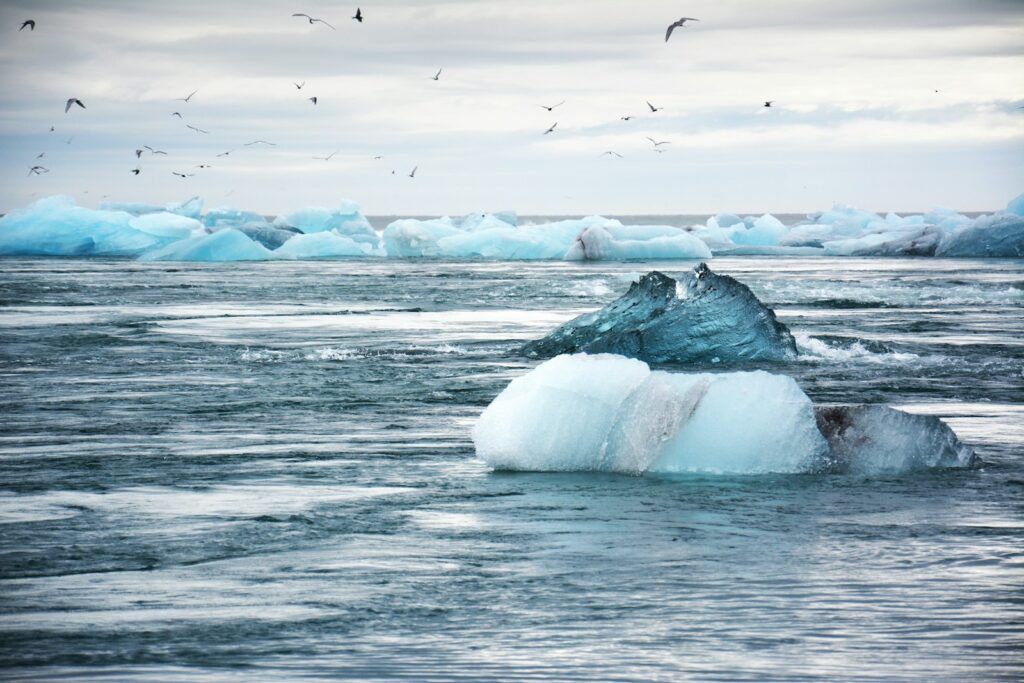
Throughout the Mesozoic Era, climate shifts periodically transformed river systems, forcing dinosaur communities to adapt or migrate as their habitats changed. The breakup of Pangaea altered continental rainfall patterns, with some formerly lush river basins becoming increasingly arid while new waterways formed elsewhere. Fossil evidence from the mid-Cretaceous suggests that rising sea levels created vast coastal plains and expanded deltas across many continental margins, opening new habitats for dinosaurs adapted to these environments. During warm greenhouse periods, intense monsoon cycles amplified seasonal flooding, while cooler intervals led to more predictable river flow regimes. These climate-driven changes in hydrology are recorded in sedimentary features like paleosols (ancient soils) and river channel geometries, which paleontologists correlate with shifts in dinosaur diversity and ecology. The fossil record suggests that dinosaur communities responded to these changes through range shifts, local adaptations, and in some cases, evolutionary innovations that allowed exploitation of new ecological niches as river systems transformed.
Conclusion

The story of dinosaurs is inseparably linked to the ancient rivers and deltas that sustained them throughout their 165-million-year reign. These waterways weren’t merely features of the landscape but active shapers of dinosaur evolution, behavior, and diversity. From the specialized adaptations of semi-aquatic predators like Spinosaurus to the synchronized breeding cycles of herbivores that followed seasonal flooding, river systems influenced virtually every aspect of dinosaur biology. The exceptional preservation conditions in riverine environments have provided us with the majority of our dinosaur fossil record, allowing scientists to piece together these long-vanished ecosystems with increasing detail. As research continues, the sophisticated relationships between dinosaurs and their aquatic habitats reveal not just isolated prehistoric creatures, but interconnected communities intimately tied to the hydrological cycles that have shaped life on Earth since its earliest days.



